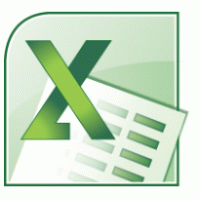 Back to jkp-ads.com |
Ron de Bruin
|
|
 Back to jkp-ads.com |
Ron de Bruin
|
|
Ron de Bruin decided to remove all Windows Excel content from his website for personal reasons. If you want to know why, head over to rondebruin.nl.
Luckily, Ron was kind enough to allow me to publish all of his Excel content here.
Most of these pages are slightly outdated and may contain links that don 't work. Please inform me if you find such an error and I'll try to fix it.
Kind regards
Jan Karel Pieterse
The first thing I suggest you should do is read the "International
Issues" chapter from the following link:
Excel 2002 VBA
Programmer's Reference
Written by John Green, Stephen Bullen,
Rob Bovey and Robert Rosenberg
http://www.oaltd.co.uk/ExcelProgRef/Ch22/default.htm
Note: see also the other pages about International Excel Issues on my site.
It can be useful to know what the Excel version and the Excel language is of the Excel application that opens your workbook so your code can do different things depending of the version/language.
You can use this to get the version number of Excel in any local : Val(Application.Version)
Sub Test()
If Val(Application.Version) < 12 Then
'You use Excel 97-2003
Else
'You use Excel 2007 or higher
End If
End Sub
Excel 97 = 8
Excel 2000 = 9
Excel 2002 = 10
Excel 2003 = 11
Excel 2007 = 12
Excel 2010 = 14
Excel 2013 = 15
Excel 2016 = 16
Excel 2019 and Excel 365 also give you number 16
You can use this test macro to test the real version, I hope to have a better version soon.
Sub TestExcelVersion_2016_2019_365() 'Testcode for Excel 2016, 2019 and 365 in Win and Mac Excel 'Application.version will display 16 for all versions Dim Answ As String If Int(Val(Application.Version)) = 16 Then On Error Resume Next 'Test the xmatch function NEW in Excel 365 Answ = Application.Evaluate("=XMATCH(5,{5,4,3,2,1})") If Err = 0 Then MsgBox "You run Excel 365" Else Err.Clear 'Test the concat function NEW in Excel 2019 Answ = Application.Evaluate("=CONCAT(""A"",""B"")") If Err = 0 Then MsgBox "You run Excel 2019" Else MsgBox "You run Excel 2016" End If End If End If End Sub
You can use this to get the language chosen in Windows Regional Settings
:
Application.International(xlCountrySetting)
This will give you the Country code, for example 31 for Dutch and 7 for
Russian.
For a list of country codes do a Google Search because MS delete
the information online.
You can use Select case to run the code you want like this
Sub Test1()
Select Case Application.International(xlCountryCode)
Case 31: MsgBox "Run code for Dutch"
Case 7: MsgBox "Run code for Russian"
Case Else: MsgBox "Run code for English (default)"
End Select
End Sub
See how I use it on this page to create a Ribbon menu
Menu in the Ribbon with different languages in
Excel 2007 and higher
If you want to know the exact language of the userinterface of Excel
(Because you can install many different language packs) you can use this to
return the language ID number:
Application.LanguageSettings.LanguageID(msoLanguageIDUI)
To
know what language belong the each ID press F2 in the VBA editor to open the
object browser and enter msoLanguageID in the search field and press the
search button. You see a long list now with language Id's. If you select one
you can see the number on the bottom of the object browser. For example if I
select "msoLanguageIDDutch" I see this on the bottom of the object browser :
Const msoLanguageIDDutch = 1043 (&H413)
You can use Select Case now in your code to run different code for a few
languages, for example
to display the captions of your buttons in the
correct language or anything else.
Sub Test2()
Select Case Application.LanguageSettings.LanguageID(msoLanguageIDUI)
Case 1043: MsgBox "Run code for Dutch"
Case 1049: MsgBox "Run code for Russian"
Case Else: MsgBox "Run code for English (default)"
End Select
End Sub
Note : Not working in Mac Office, see my Mac page for another way to do this.
In the section above I use Application.International(xlCountryCode) to
get the language chosen in Windows Regional Settings. But you can use it to
get a lot more information about the users Excel application with this in
your VBA code. If you search for Application.international in the VBA editor
the Help will give a you a table with all the XlApplicationInternational
constants that you can use in your code.
For example this code line
will give you the local Year, Month and Day character
MsgBox "The Year, Month and Day Characters are " & _
Application.International(xlYearCode) & " " & _
Application.International(xlMonthCode) & " " & _
Application.International(xlDayCode)
If you not want to use
VBA to get this kind of information check out Get.workspace example workbook
on this page : International Worksheetfunction problems
Check out this page if you use Office for the Mac :
Mac Excel version and Mac Office language settings